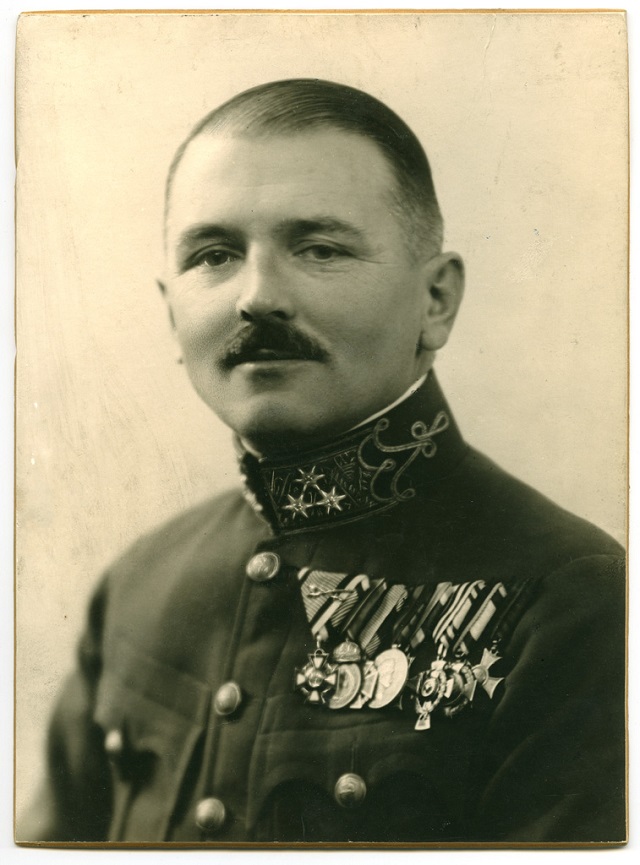founder and custodian, then Director of the Royal Hungarian Military History Museum
Budapest, 1 November 1882 – Budapest, 14 September 1954

His father, Károly Aggházy was a well-known pianist, music teacher and composer, and his uncle, Gyula Aggházy was a renowned painter.
In 1897, he was admitted to the Ludovika Academy with financial support, and after completing his studies (1901) he was assigned to the Royal Hungarian 17th Infantry Regiment as an officer candidate NCO; he served in Veszprém and Székesfehérvár and earned the rank of lieutenant (1901-1905), then was a battalion adjutant officer and company commander of the Hungarian Royal 18th Infantry Regiment in Kőszeg and Sopron (1905-10), and finally he was posted to the Royal Hungarian 1st Infantry Regiment in Budapest.
He published regularly from 1906, and consciously prepared for the meticulous research of the War of Independence of 1848-49, especially the Siege of Buda in May 1849: in addition to studying the literature, he collected data by oral history and military site analysis. In World War I, as captain, he was commander of the Esztergom-Kenyérmező POW camp until 6 December 1914, and then he was commanded to the Serbian front, where he was taken prisoner on 13 December. He was in captivity until 28 November 1915, and although treated at Budapest clinics for two months, his left leg was partially paralyzed, classifying him as unfit for field service. He was assigned as a military history archives and museum administrator to Department 1/a of the Ministry of Defence, from which he established with Lieutenant Colonel János Gabányi in early November 1918, after the collapse of the Austro-Hungarian Monarchy, the Hungarian Military History Archives and Museum. "... I set up a treasure house for the eternal glorification of Hungarian bravery, ... preserving, rescuing and hiding a whole mass of incredibly valuable, precious and endangered military relics in a safe place...", he later wrote.
From 1925, Aggházy participated as a collections expert in the Hungarian-Austrian Liquidation Commission established for the distribution of the monarchy's financial and cultural wealth. He was appointed colonel and director of the Military History Museum in 1928. After taking over the management of this institution, he managed the Museum with a clear concept and bold, far-sighted plans. He was the first Hungarian advocate of battlefield research (military archaeology). To commemorate the onetime events at various sites in the capital and the country, he marked places of national military historical importance with memorial tablets, and got involved in the excavation and preservation of military graves. He made his best to establish a National Military Pantheon. From 1 May 1938, he had to retire for health reasons, but continued to work, and only on 30 April 1940 did his employment at the museum come to an end. He also gained merits in getting the Hungarian military flags of 1848-49 back to Hungary in 1941 from the Soviet Union. His merits were recognized both abroad and in Hungary by prestigious decorations, memberships, in both the military and the cultural field.



